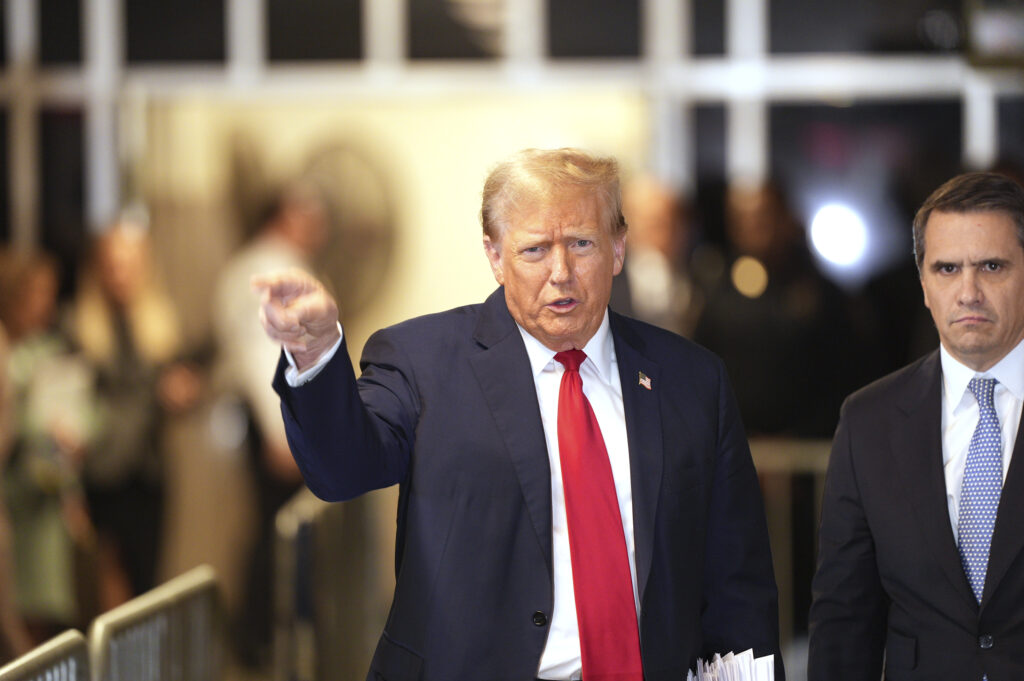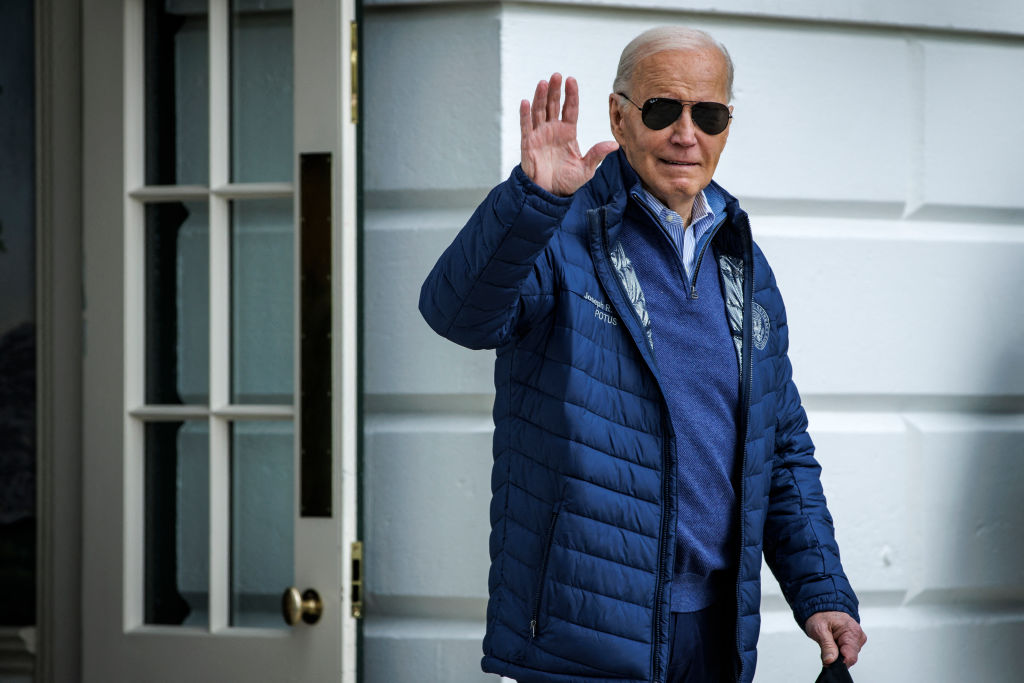Timeline: Andrew Cuomo’s Scandalous COVID-19 Response

The past twelve months have been hugely turbulent for the Governor of New York, Andrew Cuomo. In the early months of the COVID-19 pandemic, as we approached November’s general election, he was celebrated as a hero of the effort against the virus. With Joe Biden replacing Donald Trump in the White House, the sudden acknowledgement of scandalous behavior has dragged Cuomo down into the gutter of public opinion, fueled by Democrats keen to distance themselves from the New York governor.
Let’s take a look at Gov. Cuomo’s rise and fall throughout the pandemic, during the twelve months which saw him assume the role of hero and then villain.
March 1: New York records its first case of COVID-19 after a woman returning from travel in Iran tests positive. “It’s deep breath time,” says Gov. Cuomo.
March 2: Cuomo and New York City Mayor Bill De Blasio promise to contact trace New York’s first COVID-19 patient, and are confident in the state’s ability to handle the virus. “Everybody is doing exactly what we need to do,” Cuomo says. “We have been ahead of this since Day 1.”
March 5: Cuomo announces that the number of cases in New York doubled overnight from 11 to 22.
March 6: Cases double overnight, from 22 to 45.
March 7: Cuomo declares a state of emergency in New York.
March 8: Cuomo downplays the virus at a briefing, saying “There is more fear, more anxiety, than the facts would justify,” and that “This is not the Ebola virus, this is not the SARS virus, this is a virus that we have a lot of information on.”
March 10: New York orders the first coronavirus containment zone in the country, impacting Westchester County’s New Rochelle.
March 14: Cuomo announces the first two COVID-19 deaths in New York.
March 16: With cases in New York hitting 950, Gov. Cuomo aligns with the Governors of New Jersey and Connecticut to apply the same rules for closures, criticizing the federal government. “We need the federal government to do a better job,” Cuomo says. “States don’t have the capacity or the power to make up for the federal government. We’re doing the best we can, but we need the federal government to step up.”
March 18: Gov. Cuomo signs executive order that mandates all but essential businesses to reduce their workforce density by 50%, with more employees working from home.
March 19: With cases hitting 4,152, Gov. Cuomo further downscales workforce density to no more than 25%.
March 20: With more than 8,300 statewide cases, Cuomo orders all nonessential businesses closed. Calling the policy New York State on PAUSE, (Policies that Assure Uniform Safety for Everyone) Cuomo says “This is the most drastic action we can take.” The order took effect on March 22, suspending all elective surgeries while liquor stores were defined as essential services.
March 23: New York City has more than 12,000 cases, amounting to 35% of all COVID-19 cases in the country. Cuomo states that New York has 53,000 hospital beds but needs 140,000, ordering hospitals to double their capacity. “This is going to get much worse before it gets better,” Cuomo says. “You are going to see the number of infections … the number of cases increase dramatically.”
March 24: Cuomo states that “The apex is higher than we thought and the apex is sooner than we thought,” and criticized the federal government.
March 25: New state policy requires nursing homes to accept COVID-19 positive patients who are discharged from hospitals.
March 29: With over 59,000 cases and 965 deaths in the state, Cuomo quotes FDR, tweeting “Courage is not the absence of fear, but rather the assessment that something else is more important than fear.”
March 31: According to the New York Times, Cuomo inserts a provision on page 347 of budget negotiations which protect nursing homes, hospitals and other health care facilities from lawsuits which make accusations of failing to protect patients from COVID-19, retroactive to March 7.
April 3: Cuomo signs the state budget which includes the hidden liability provision for nursing homes.
April 13: Cuomo speaks on CNN, rejecting Trump’s claims that “When you’re president of the United States, the authority is total, and that’s the way it’s got to be,” saying “you don’t become king because there’s a federal emergency.” On the same day, Cuomo also praised Trump, saying “He has delivered for New York. He has.”
April 14: Cuomo appears on four cable morning shows, telling MSNBC that Trump “basically declared himself King Trump.”
April 17: For the first time, the state releases data on COVID-19 deaths broken down by nursing home facilities.
April 20: When asked about the state’s policy on forcing nursing homes to admit COVID-19 positive patients, Cuomo responds “That’s a good question, I don’t know.”
April 23: Cuomo says that nursing homes “don’t have a right to object” to the order to admit COVID-19 positive patients, saying “That is the rule and that is the regulation and they have to comply with that.”
April 27: Sienna poll gives Cuomo his highest ever favorability rating.
April 29: New York Post reports that New York’s “Health Department allowed nurses and other staff who tested positive for the coronavirus to continue treating COVID-19 patients at an upstate nursing home.”
April 30: Cuomo announces that New York City subways will be closed between the hours of 1 a.m. and 5 a.m.
May 5: New York begins posting confirmed and presumed deaths at nursing homes and assisted care facilities.
May 10: The March 25 order requiring nursing homes to accept COVID-19 positive patients is rescinded, with Cuomo blaming nursing homes for accepting patients when they couldn’t be effectively quarantined. Replaces it with an executive order which requires a negative COVID-19 test before nursing homes can admit patients.
May 20: Cuomo claims that New York was following federal CDC guidance when it enforced the March 25 nursing home policy. Politifact deemed this often-repeated claim to be “Mostly False.” The March 25 directive is removed from the Department of Health website.
May 21: In one of many appearances, Gov. Cuomo speaks with his younger brother, Chris Cuomo, on CNN, and jokes about nasal swabs and the size of his nostrils.
May 22: The Associated Press reports that approximately 4,500 COVID-19 patients were sent from hospitals to nursing home facilities, based on AP data after New York declined to release this information.
June 8: Cuomo announces the first phase of the reopening of New York City, saying “We went from the worst situation in the nation or frankly the world — we bent the curve and we brought the spread down dramatically,” later describing the first 100 days of the COVID-19 pandemic in New York as “hell.”
July 6: New York state issues a report which claims that the high death toll in nursing homes is due to asymptomatic staff and visitors, and not COVID-19 patients being transferred in under the March 25 directive.
July 24: Cuomo boasts that New York is 35th in the nation in terms of nursing home deaths as a percentage of total COVID-19 deaths.
August 3: New York state commissioner of the Department of Health, Howard Zucker, refuses to provide the state legislature with data on COVID-19 nursing home deaths, with the Empire Center for Public Policy submitting a FOIL request for this data on the same day. New York also rolls back part of the increased immunity for nursing home facilities.
August 12: The Associated Press reports that New York’s actual nursing home death total could be more than 11,000, far higher than the 6,600 reported by the state.
August 17: Cuomo speaks at the Democratic National Convention, saying “We climbed the impossible mountain, and right now we are on the other side,” that the federal government “watched New York get ambushed by their negligence and then watch New York suffer but all through it learned absolutely nothing,” and that “we will wear masks because we are smart and because I care about you and because you care about me.”
August 18: Crown Publishing Group announces that Cuomo would be releasing a book called “American Crisis, Leadership Lessons From The COVID-19 Pandemic.”
August 20: Cuomo appears to downplay concerns regarding the undercounting of nursing home deaths, saying “If you die in the nursing home, it’s a nursing home death. If you die in the hospital, it’s called a hospital death.”
August 26: The federal Department of Justice requests nursing home data, with the Cuomo administration asking for more time to respond in September.
September 18: The Empire Center sues for the release of nursing home death data.
September 30: In response, Cuomo accuses critics of politicizing the COVID-19 deaths, saying “Having someone who lost a loved one, saying to them, well, this was a government mess up, this was unnecessary, your father could be alive, your mother could be alive, your grandmother could be alive, that’s just untrue. And frankly, it’s mean.”
October 12: Zucker is asked again about the status of the full nursing home death count, who says that the state will release the data once it is “accurate.”
October 28: Department of Justice announces that it is expanding its inquiry into New York specifically, as the state was the only in the country which did not include COVID-19 patients transferred to nursing homes from hospitals as part of its nursing home death count.
November 20: International Emmy Awards honors Cuomo with its 2020 Founders Award for “his effective use of television during the pandemic.”
January 28: State Attorney General Letitia James releases a report which estimates that New York undercounted COVID-19 deaths in nursing homes and long-term care facilities by as much as 50%. That same evening, Zucker releases a statement saying that New York’s death count in nursing homes was 12,473 when those transferred from hospitals were included, far more than the 8,700 deaths reported on the Department of Health Website.
February 3: It is ruled by a state judge that New York illegally withheld nursing home data requested by the Empire Center.
February 6: New York’s Department of Health website is updated to include nursing home deaths that occurred in hospitals, with the count rising to 13,163.
February 10: The Cuomo administration meets privately with Democratic lawmakers, who later release the information provided which showed that the total COVID-19 death count in nursing homes and long-term care facilities was 15,049 through February 9.
February 11: The New York Post reports on Secretary Governor Melissa DeRosa’s apology to Democratic legislators for intentionally hiding COVID-19 death data out of fear of federal prosecutors.
February 12: Cuomo meets with President Biden and Vice President Harris to discuss COVID-19 relief.
February 16: Cuomo admits that he made a “mistake” in not providing timely access to COVID-19 nursing home death data, while continuing to defend his administration’s handling of the pandemic.
February 17: The FBI and federal prosecutors are investigating Cuomo’s COVID-19 response, focusing on their early handling of nursing homes.
Ian Haworth is an Editor and Writer for The Daily Wire. Follow him on Twitter at @ighaworth.
The views expressed in this piece are the author’s own and do not necessarily represent those of The Daily Wire.
The Daily Wire is one of America’s fastest-growing conservative media companies and counter-cultural outlets for news, opinion, and entertainment. Get inside access to The Daily Wire by becoming a member.
" Conservative News Daily does not always share or support the views and opinions expressed here; they are just those of the writer."




